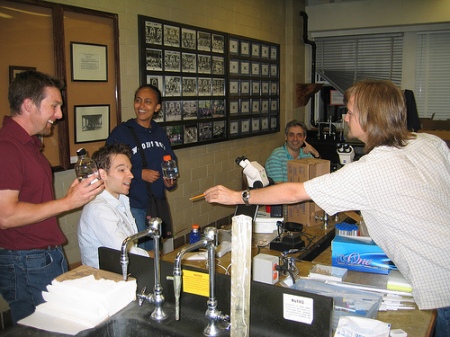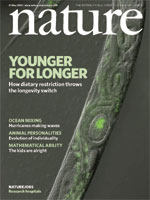Professor Cynthia Kenyon is a pioneering researcher in the biology of aging. A couple years ago, she presented a Harvey Lecture at Rockefeller University on her work; that lecture was similar to the one I heard her give at last year’s Woods Hole summer school course on aging. I think that it’s worth highlighting some of the things she has to say.
“We began our studies in the early 1990s. At that time, and for years before, many people assumed that aging was a haphazard process, not subject to regulation. Our tissues just break down, and we die. But the more I thought about it, the more I started to question this view. A mouse lives two years, whereas a bat can live 30 years or more. A rat lives three years; a squirrel, 25. These animals differ by their genes, so there must be genes that affect aging. Also, nothing in biology seems to “just happen”; everything seems to be regulated, often in quite an extraordinary way.
My experience as a developmental biologist sharpened my thoughts about aging. People were once very skeptical about looking for developmental genes. Treating frog embryos with acid can produce a second head, and inhibiting pyrimidine synthesis in flies produces small wings, so many people thought that genes affecting development would also affect things like the Krebs cycle, or pH. They were wrong. There is a dedicated regulatory circuitry for pattern formation. In addition, many people thought that developmental mechanisms would differ completely in different kinds of animals, but again they were wrong. In fact, the degree of evolutionary conservation is striking. So it seemed to me that something as fundamental as aging might also be subject to regulation. Maybe there would be a molecular longevity “dial,” like a thermostat, that is universal but set to run at different rates in different kinds of animals. The dial would be turned up in mice (which age quickly) and down in bats (which age slowly). I wrote extensively about this in the 1990’s (Kenyon, 1996, 1997), suggesting, for example, that aging might be regulated by something like the heterochronic genes of C. elegans, which control the timing of developmental events.”
…
Click on figure to expand
“Since we obtained such a long lifespan when we killed the gonads of daf-2 mutants, we wondered what would happen if we reduced daf-2 activity even more in these animals. Using a stronger daf-2 allele would run the risk of triggering dauer formation, but we found that we could dodge dauer formation if we subjected long-lived daf-2(e1368) mutants to daf-2 RNAi soon after hatching. When we did this, and killed the gonads as well, the animals lived six times as long as normal (Fig. 2.16). Incredibly, the animals remained healthy and vigorous for a very long time. In fact, when Nuno Arantes-Oliveira, the graduate student doing this work, showed two 144-day-old animals, still moving around, to other lab members and asked them to guess the age of the animals, they reckoned five days! [For a movie of these two spunky animals, see Arantes-Oliveira et al. (2003).] It is remarkable that with just a few minor changes, it is possible to produce such an enormous lifespan extension (the equivalent of 500 years in humans) with no obvious effect on the vitality of the animals.”
…
“If we really could live longer, remaining youthful and disease-free, why haven’t scientists been working on this already? First, as I said, they didn’t think it was possible, since aging was thought to be unruly and random. Second, and even more important, we haven’t had any role models to emulate, primates that shoot rockets to the moon, go to the opera, and live for 300 years. If we did, we might already know how to stay young and live much longer than we do. We invented airplanes because we could see birds could fly. Now that we know that animals can live longer than they do, perhaps soon we will learn how to extend our own youthfulness and lifespan. It may not be that difficult. Since there are short-lived and long-lived insects, birds, and mammals, longevity must have evolved not just once but many times. Maybe the path to increased longevity is in us already, in the form of a network of genes and proteins, waiting to be nudged in just the right way.”
I recommend you read the whole thing–it’s quite readable, and the scientific results are breathtaking.
And if you’re interested, here is a video from earlier this year with Charlie Rose interviewing a panel of biologists about the remarkable progress that has been made in aging research recently. Members of the panel include Kenyon and Lenny Guarente, another leader in the field whose book I previously reviewed.






